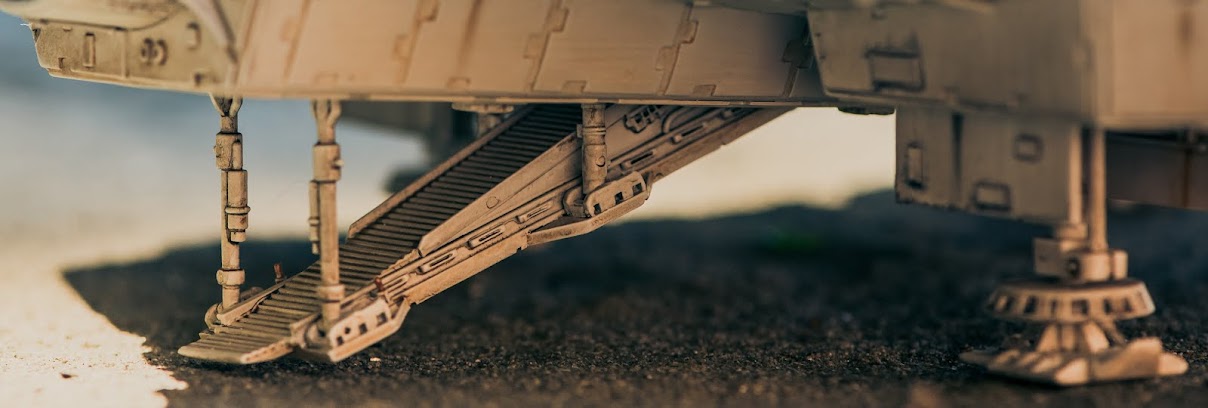To start with you need to get an idea of what you're going to build. If you are new at this I highly suggest you start small. Do not attempt to build a 6 foot long Imperial Star Destroyer, if you go big you most likely will be in over your head and may not enjoy your hobby. My first styrene scratch build was a 1/35 scale model tank from the video game "Warhawk"
I chose this model because I was fortunate enough to find a set of paper-craft instructions on-line.
This is a set of instructions to make the model out of paper. You simply print off the sheets then cut and fold on the dotted line. I printed the sheets up to the size I wanted (to match 1/35 scale tank tracks). Then I used the sheets as actual size blue-prints. I made some of the paper shapes just to see what it was supposed to look like, then took measurements off of those and made the part out of styrene.
I've got in my future projects drawer paper-craft instructions for the Mako from the video game "Mass Effect" as well as the space station from "2001 a Space Odyssey". The instructions are all in German, but I should manage.
I also own several "Art of.." books from movies and video games, as well as art books from various artists.
There was a time when all my modelling tools and supplies fit into a fishing tackle box, then a large tool box, then two tool boxes. Now it all would fill a medium sized room. My new workshop is leaps and bounds beyond the dinning room table of apartment living. I bought two work tables from IKEA and covered them with RINO board, a type of self healing cutting mat. However I have seen many modellers build fantastic stuff on their dinning room table.
This is my work bench now.
You probably know what most of these are except for 'E'. That's a home made notch-er for cutting the notches out of the YT-1000's armor panels.
For gluing Styrene I mainly use Methylene Chloride, which is a solvent glue. It's very quick and uses capillary action to flow under the parts you are gluing. I recommend some sort of ventilation as this stuff is not good to breath, and try not to get it on your skin. I use a small paint brush (see 'M' in the tools photo) to dip into the solvent then run along the edge of the pieces I'm gluing together. Sometimes it's necessary to press the joint together, and somtimes the melted plastic will ooze out. You can run some more solvent over the joint to wash it away, or let it set for a while and sand it off. It will also leave a sheen to your styrene but this can be buffed with some 600 grit sandpaper. You should be able to buy it where ever plexi glass is sold as it is also used to glue acrylic sheet.
I seldom use CA glue (zap a gap). I will use it to glue two different types of plastic together, like gluing a cast piece onto styrene. I find it most frustrating as it sticks best when I don't want it to, like when the part goes on crooked. And won't stick at all when I most need it to.
This is an unfinished post, please come back later for more on this subject.
Bye for now!






